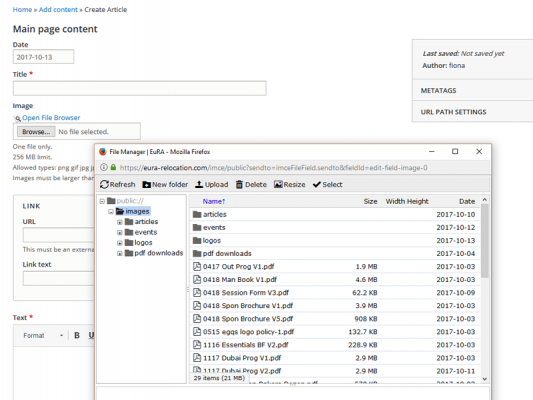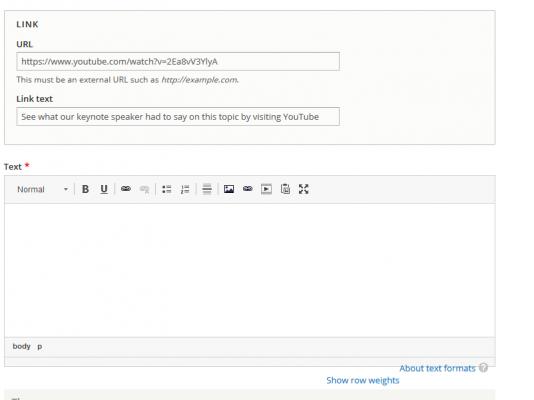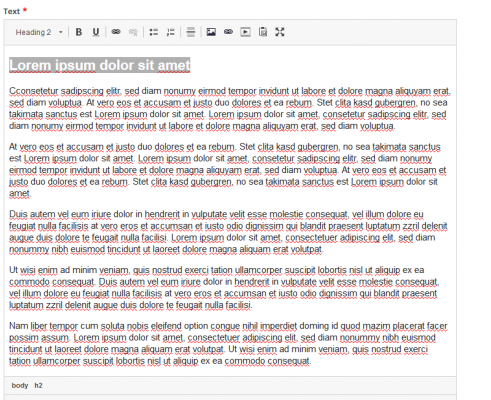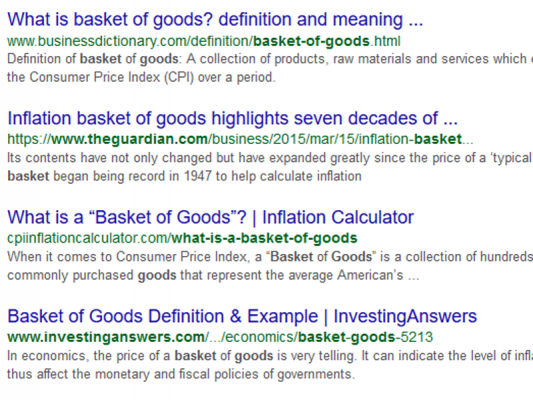Publishing with EuRA
Publishing Articles with EuRA
The new EuRA website allows members to share their most important business insights on our home page and articles newsfeed. If you would like to publish an article with EuRA - which may then be featured on our home page as well as in our overview of articles - then there are a few sections you need to know about.
Please note that your article will only be published following review by the EuRA team. Overtly salesy or promotional messages will not be published.
The idea is to add to the general conversation of EuRA with insightful pieces, practical information and substantiated research papers that showcase your company’s professional expertise. More on choosing a topic further down.

The Basic Elements: Title
This is the title of your article and will become part of the URL (the link to the article itself). Make sure it is an attractive and easy to read title. Preferably it will contain the main keyword around which your article is written, e.g. “Key Trends for Cost of Living Allowances 2018”.

Image
Add an image to your article for a bit of visual love. You have two options here: the magnifying glass that says ‘open file browser’ (this brings you to your personal folder of saved images on the EuRA website) and the button called ‘browse’ (this brings you to your computer’s folders and allows you to select the image you wish to upload to the system).
Your personal folder will be empty the first time you visit, but once you’ve started adding images to your personal folder they will always be available to you.
Your image needs to be a minimum size of 400x260 pixels. If this means nothing to you (which we can imagine), then just pick the largest version you have available. The system will automatically scale the image to size for you.

Image Focal Point
You will see a white cross in the middle of the picture. Drag this to the focal point of your image, for example to the centre of your face if you’re adding a profile picture. This means that no matter what format the picture shown is (desktop, tablet, mobile phone) it will always show your face and not for example your shoulders.
Once you have added your image another field pops up: ‘alternative text’. This bit will be shown when an image cannot be loaded. You could add your name and job title in case of a profile picture, a description of the location for an event picture, or a description of the content of (for example) the graph you’ve added as an image.
Both the 'alternative text' and the image 'title' are used for search engine optimisation purposes so always complete them. Don’t just say ‘graph 1’ but say ‘key trends in CoLA to watch out for in 2018’: properly named images give your article a leg up in the search engines.
The image title is shown when you hover over the image with your mouse. Use the same description, or use the article’s title: whichever you feel is most appropriate.

Link
Below 'image' you'll find a section you can use to link a part of the text to an external site, for example a Flickr album of the event, a YouTube webinar on the topic, or even your own site. Only choose something appropriate to the article, the EuRA website is not a personal promotion tool.
Copy-paste the full link and then add the text you want to place this hyperlink on, e.g. ‘EuRA keynote speaker Tony Chapman on corporate branding’.
Please note: adding a link to your text is not obligatory. If the article stands perfectly well by itself, then don’t add excess things that will only serve to clutter it up and confuse the reader.

Text
This is where the main body of your article goes. It works pretty much like a regular text editor document, with options for italics, bold, headers, bullet points and more.
Add a second image within the text with the image icon (mountain view with sun), embed a video with the video icon (uncheck the ‘autoplay’ option: nobody likes videos to start playing full volume as soon as they open the page), add a hyperlink to another page, or a PDF document for download.
You will see two ‘hyperlink’ options (the chain links) - the left one allows you to copy-paste a url to another page or website, the right one brings you to your personal folder where you can upload documents such as PDFs for download.
Feel free to have a play around with your article: you can save, preview and revise it as often as you like until it is published by EuRA. We do however strongly recommend not going wild with lots of different header sizes, bolds, italics, bullet points, numbered lists, pictures and more: the easier it is on the eye, the more pleasing an item is to read. Less is more, as they say.

The More Advanced Stuff: Metadata
Metadata is the mythical stuff that will help your article be found on the world wide web. The most important two to look at are the ‘page title’ and the page ‘description’. When you look something up online you will get a list of results featuring items like this:
The blue section is the page title, the green bit is the url (the link to the page) and the grey section is the page description. If you don’t fill anything out the system will automatically use the first few lines of your article as the description and your article title as the page title.We do however recommend taking five minutes to complete these sections as they have an impact on your search engine results.

Metadata Good Practice
Example page title: Key Trends for Cost of Living Allowances 2018 | EuRA Relocation
This title should be no longer than 55-65 characters, including spaces. You may drop ‘EuRA Relocation’ if your title becomes too long, but if you are listing a website, it should always be ‘EuRA Relocation’ and never your own. After all, this is the EuRA website.
Example page description: Calculated on the basis of the so-called ‘basket of goods’, in 2018 we will see increases in housing, education and medical care allowances around the world.
The page description is a short description (150 characters including spaces) that shows the reader what the page is about. Try to stick within the character limits to ensure the full description is shown and isn’t cut off mid-sentence to read..... and use your key words.
You can add your metadata in the grey 'publishing' section on the right of your 'create article' page. There are some highly advanced options such as Dublin Core and Open Graph metatags, but unless you know exactly what you’re doing we suggest leaving them for what they are. Click on the fold-out menu 'metatags' to start adding yours.
Finally, save your article and let the EuRA team know you have an article up for review.

Choosing a Topic
Lastly, but certainly not least, we want to help you decide what to write about. Choosing a topic isn’t always easy. What is relevant and important in your mind, might be of absolutely no interest to the reader. Thankfully we have a simple rule of thumb: always look at it from the reader’s point of view. What is it that they really want to know?
Let’s say you will be offering Chinese classes from September and would like HR departments to know about this for their international assignees. “New course starting September!” is a simple announcement and may get a few thumbs up from your friends, but it is unlikely that it will stick with the reader unless they are actively looking for Chinese classes right now.
Instead, come at it from a different angle: discuss the growing importance of Chinese-Belgian relations in business, explain the dynamics and challenges of cultural differences, and the importance of understanding some of the most key terms and phrases in a cross-cultural workplace. This showcases your extensive knowledge on a wider subject, shows context and positions you as a thought leader in the industry.
A well-researched and substantiated piece is much more likely to convince the reader that Chinese language classes are an important consideration for the assignee’s package. It gives food for thought and adds to the conversation, making it shareable content. And shareable content is what will drive increased traffic your way.
Hint: still struggling to decide on a topic? Ask yourself where your audience is hanging out. Are you looking to reach that multinational’s HR department? Then join HR related interest groups on LinkedIn.
Follow their newsfeed for a few weeks and take note of what questions keep cropping up. What are the problems they keep running into? Can you provide an answer to their questions?
Or alternatively: what questions are they not asking but should they be?

